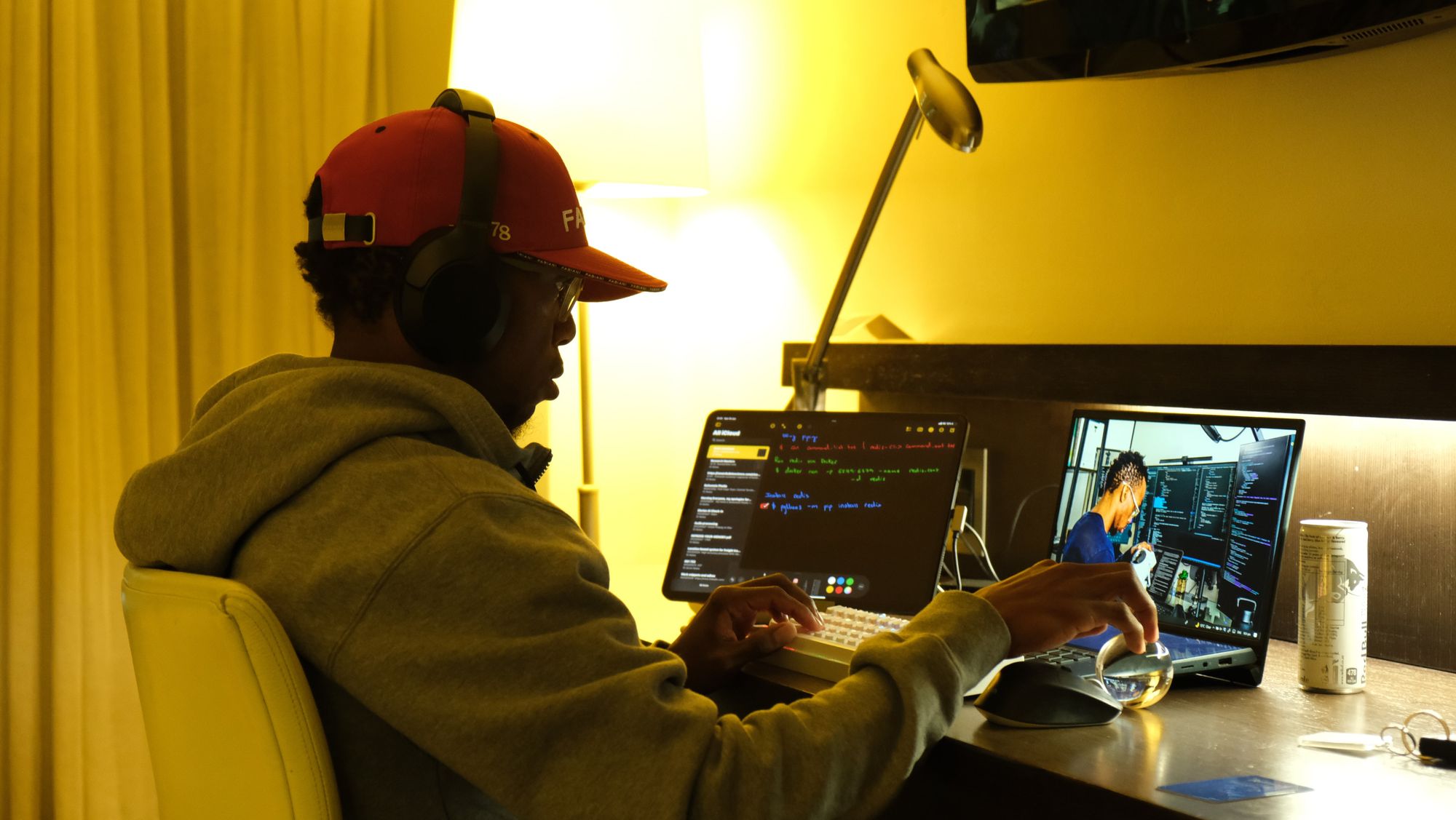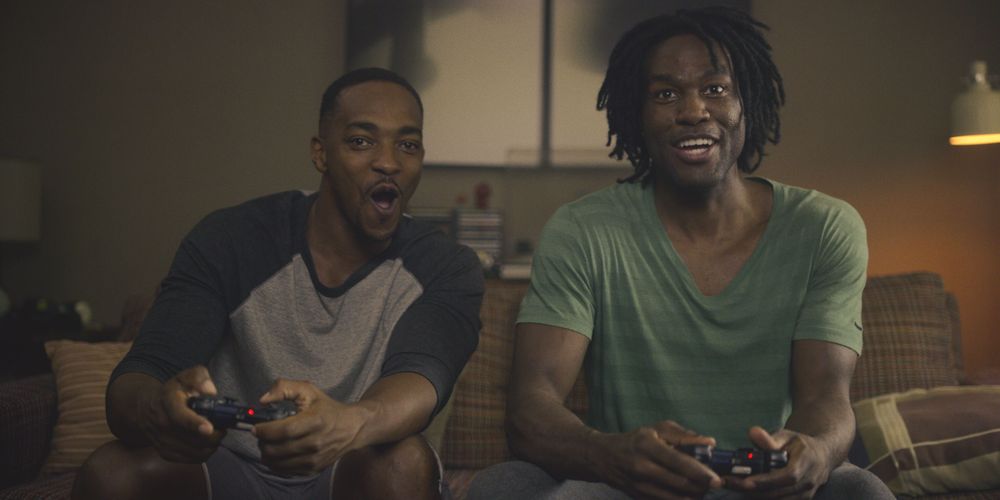In the dozen years since its premiere, Netflix's sci-fi anthology series Black Mirror has been called all sorts of prophetic—and for good reason. The show’s dark, techno-weary lens has accurately predicted a handful of alarming developments in our fast-changing world. And these days, our modern reality is growing even more precarious, as advances in the metaverse, virtual reality, artificial intelligence, social media, and other technology frontiers continue to reshape life in ways many of us never imagined.
But really though, how many of series creator Charlie Brooker’s tales have ended up telegraphing our reality? We’ve got your answer. We revisited all 22 Black Mirror episodes (and the choose-your-adventure-style standalone movie) to evaluate to what degree the series is truly a soothsayer. Reflecting reality is one thing; forecasting what's to come is a whole 'nother beast.
“Arkangel” (2017)
The Forecast: An overbearing mother takes helicopter parenting to new heights, thanks to an experimental microchip that allows her to monitor her daughter’s vision, hearing, and vitals at all times. Said chip also includes a feature that can censor the daughter from explicit and potentially stress-causing stimuli. The old-as-time tale ends just like that one awful Ludacris song.
Are We There Yet? While the devices featured in this episode recall technology that was already on the market upon its premiere, the difference is you can’t watch, listen to, and record your child’s every experience. So let’s say no.
Black Mirror: Bandersnatch (2018)
The Forecast: This interactive tale set in 1984 is about a programmer turning a choose-your-own adventure novel into a choose-your-own adventure video game, which in turn makes this film a choose-your-own adventure viewing experience. (In one ending, the programmer in the story loses his mind, which is exactly how many of us felt after trying to navigate every possible sequence and ending.) Kudos for a standalone film that delivers on innovative storytelling—even if the episode is kind of mid.
Are We There Yet? Not applicable, seeing as this is set in (and heavily inspired by) the past. (The multiverse theme, however, is now more ubiquitous than ever.)
“Be Right Back” (2013)
The Forecast: The idea of reconnecting with a deceased loved one may sound intriguing, but as “Be Right Back” depicts, it can get weird, quick.
Are We There Yet? Yes. While artificial intelligence can’t replicate humanity as convincingly as seen in this episode, it’s not for lack of trying (see: Re;memory via DeepBrain AI Inc.).
“Black Museum” (2017)
The Forecast: This very meta episode (which starred Letitia Wright before her breakout as Black Panther’s Shuri) is set in a museum that nods to futuristic technology, some of which is featured elsewhere in the Black Mirror universe. There’s a helmet that allows an implanted person to experience the wearer’s physical sensations, as well as the ability to transfer one person’s consciousness into an inanimate object, a hologram, and even another human.
Are We There Yet? No. Weirdo museums are nothing new, but none of the aforementioned tech is possible with today's science.
“Crocodile” (2017)
The Forecast: Exploiting vision and memory are recurring Black Mirror concepts. Here, the ability to access and view the memories of any living being (via a “recaller”) causes a woman to go to sinister lengths to cover up a murder.
Are We There Yet? No. There’s no such thing as a recaller, but if there were, all hell would break loose. (And yet there’d still be bozos out there who refuse to believe Tory shot Megan.)
“Fifteen Million Merits” (2011)
The Forecast: This episode is a critique of the capitalism, consumerism, and fame we’ve been subjected to for decades. Drawing heavily from the distant past (see: The Xtra Factor, the UK’s counterpart to The X-Factor) but also forecasting contemporary references (political commentator Hasan Abi, Only Fans, and the endless TikTok scroll) Brooker dreamt up a somewhat plausible dystopian future in which everyone is the star of their own show—and has a stationary bike at home.
Are We There Yet? Technically, no, but also technically yes? Let’s just say yes because Daniel Kaluuya’s turn as Bing is basically all political podcasters and streamers. Shoutout to Peloton, too.
“Hang the DJ” (2017)
The Forecast: “Hang the DJ” imagines a dating app that gives matches a set amount of time to jump into a courtship and simulates seemingly infinite possibilities of a romance in order to determine two people’s compatibility. Like the superior fan favorite "San Junipero," it’s a sweet story that doesn’t make you feel like garbage or meditate on the state of the world for 36 hours.
Are We There Yet? Yes. While a parody of this app did reach app stores, there are stricter apps hitting town everyday. A newly released one bans ghosting and gives you only one match at a time.
“Hated in the Nation” (2016)
The Forecast: Could you imagine a bunch of autonomous drone insects (i.e. murderous robot bees) killing Twitter’s trending villain for the day? (Funny backstory: This episode is inspired by the time Brooker wrote in The Guardian, “John Wilkes-Booth, Lee Harvey Oswald, John Hinckley Jr, where are you now that we need you?,” in reference to George W. Bush’s presidency. He received a number of death threats because of the comment.)
Are We There Yet? Yes. This episode takes aim at mob mentality and online harassment and the violent undercurrent inherent in some internet cancellations that appear to occur for increasingly dumb reasons. The only Killa Beez we know are Wu-Tang affiliated, but still, it’s only a matter of time before some deranged stan takes things too far.
“Men Against Fire” (2016)
The Forecast: Woooo buddy, this is some heavy stuff. In this story, soldiers are brainwashed via technology so they’ll see members of an enemy nation as literal beasts. The government effectively tricks the infantry into genocide.
Are We There Yet? No. Brainwashing through propaganda is something governments have done for a long, long time (see: Nazi Germany and, yes, the United States of America, among others) but we haven’t quite seen this extent of consciousness altering.
“Metalhead” (2017)
The Forecast: In a dystopian world, robot dogs hunt people using trackers. The robot dogs seem to be guardians of a precious resource—teddy bears.
Are We There Yet? Yes. I mean, just look at this shit. Robots used to hunt people have been around for a short while; one blew up a shooting suspect in Dallas around the time this episode was being filmed. After backlash, some police departments banned killer robots.
“Nosedive” (2016)
The Forecast: This episode, written with the help of Rashida Jones and Michael Schur, has often been compared to China’s very real Social Credit System—it seems to operate in a parallel reality (with an exaggerated emphasis on the implications of social media).
Are We There Yet? This is tricky, since “Nosedive” mirrored the present reality at the time of its premiere. Since tying people’s worth to blue checks and social media clout has gotten worse since this aired, we’ll give it a yes.
“Playtest” (2016)
The Forecast: This one is a massive troll—a horror movie used to poke fun at a satire column about Black Mirror. In it, a man volunteers to test an augmented reality video game that uses the player’s deepest fears to create an immersive experience. Unfortunately, in the real world, the man’s phone kills him due to electrical interference.
Are We There Yet? No. We may be firmly in the era of VR, but none of today’s gizmos have the capability to create a playing experience based on a person’s subconscious.
“Rachel, Jack and Ashley Too” (2019)
The Forecast: Here we go again, with a look at the possibility of cloned consciousness—this time implanted in a mass-produced children’s toy. But the episode’s storyline hinges on the possibility of replacing a pop star with a hologram of her likeness. (Side note: It’s an interesting choice to have Miley Cyrus star in an Aesop-esque morality tale about the exploitation of artists when she, herself, has vaingloriously exploited a culture.)
Are We There Yet? Mostly no. There have been countless scummy posthumous music releases and hologram tours but until we see Ye brought to life as a talking, free-thinking, MAGA hat-wearing Build-a-Bear, “Rachel, Jack and Ashley Too” can’t quite stake its claim as prophetic.
“San Junipero” (2016)
The Forecast: "San Junipero” is an anomaly in this series. You don’t come around these parts to feel warm and fuzzy inside, but all praise to this love story that does just that by depicting a simulation inhabited by the elderly and the deceased—an afterlife in the cloud. Shout out to that real love, word to Mary J.
Are We There Yet? No. But coincidentally, this storyline has a strange parallel to a photo spread in an old nudie mag (NSFW!) of which Brooker says he wasn’t aware when writing.
“Shut Up and Dance” (2016)
The Forecast: This episode is effective in making you sympathize with a bumbling cherubic 19-year-old kid before revealing that the reason he’s being forced to commit crimes for hackers is that they have footage of him masturbating to child pornography. The humanization in this extremely dark and nihilistic thriller puts the tactics and morality of vigilantes on front street. How noble is it to put an immoral person through hell just for fun or because you’re searching for a means to justify your own bloodlust?
Are We There Yet? Yes. Of course pedophiles have been blackmailed (that’s a top-three easiest mark of all time), used for other people’s financial gain, and ended up dead.
“Smithereens” (2019)
The Forecast: Things get a little eerie when Black Mirror’s technology is firmly squared in the present (see: Persona, a fictional version of Twitter). The most unsettling aspect of this episode is how the world tunes in to watch something incredibly tragic happen in real time, then collectively shrugs it off.
Are We There Yet? This one doesn’t do much technological forecasting, but it does nail the satirization of social media and its addictive and desensitizing nature. Since there’s never been an abduction that was used to get a Silicon Valley CEO on the phone, let go with nah.
“Striking Vipers” (2019)
The Forecast: This story of two old pals (played brilliantly by Anthony Mackie and Yahya Abdul-Mateen II) developing a sexual relationship through a Tekken-esque game is among the most eyebrow-raising premises in the storied history of Black Mirror. The episode is also quite good, as it challenges viewers to reframe thinking around sexuality, intimacy, infidelity, and two Black men being vulnerable as hell.
Are We There Yet? Pretty much. Virtual sex is a thing, and has been for a while. It certainly ramped up during the early days of the pandemic. Virtual reality sex is definitely a thing, too, even if it isn’t as savvy and physiologically integrated as in this episode.
“The Entire History of You” (2011)
The Forecast: What’s going on in this episode is very reminiscent of Snapchat, Instagram stories, and their derivatives. The only difference—a gigantic one—is that these apps are not hardwired inside human skulls. At least not yet.
Are We There Yet? Nah. Cry as you may because you peeped a size 13.5 Jordan in your girl’s IG story, but creepy video playback functionality implanted inside a person’s skull is the real crux of this episode. We might tether to social media too much, but we can still log off without a medical procedure.
“The National Anthem” (2011)
The Forecast: Many of us were introduced to Black Mirror via word of mouth—and this debut episode hinged on a concept so crazy you needed to see it for yourself. Would you have ever guessed that the big shocker is a prime minister getting busy with a pig, as more than 1 billion people watch via live stream? That’s some sordid shit.
Four years after this aired, the real former prime minister of Britain, David Cameron, was accused of sticking his thing in a pig’s mouth during an initiation ceremony while he was in college. Brooker says he had no knowledge of this rumor when he was writing the show and Cameron denies it ever took place.
Are We There Yet? Whether Cameron actually put his pork inside some pork or not, this is just too freaky. We’ll say this one predicted the future.
“The Waldo Moment” (2013)
The Forecast: The brainchild behind an eponymous animated bear upends politics when he campaigns as his fictional character to be voted into parliament and gains a passionate, riotous, and seemingly uneducated following that hangs on the cartoon’s every word.
Are We There Yet? You bet your ass we are. Two words: Donald Trump.
“U.S.S. Callister” (2017)
The Forecast: In this Star Trek parody, a man clones the consciousness of his employees and drops them into a modded-out version of the video game his company publishes.
Are We There Yet? No, you can’t put clones of people’s consciousness into video games. But if you could, it would play out exactly like this episode does.
“White Bear” (2013)
The Forecast: Wiping someone’s memory as a means of torture them hasn’t quite happened, but similar disorientation tactics have been used in interrogations everywhere from your local police department to Guantanamo Bay to Abu Ghraib. Another element that separates this Black Mirror episode from reality is the use of these techniques for civilians’ viewing pleasure.
Are We There Yet? No. The unique quality of “White Bear” is the cyclical nature of torture as a theme park attraction.
“White Christmas” (2014)
The Forecast: Black Mirror’s Christmas special, “White Christmas,” is perhaps one of its most harrowing and complex stories of all. This one presents several moral dilemmas, thanks to tech that allows for the creation (and torturing) of miniature digital human clones and the ability to be blocked in real life (the blocker and banished person experience each other as gray blobs with garbled voices).
Are We There Yet? No—Alexa’s got nothing on these self-aware Mini-Me’s. But blocking people in real life? Just wait on it.


